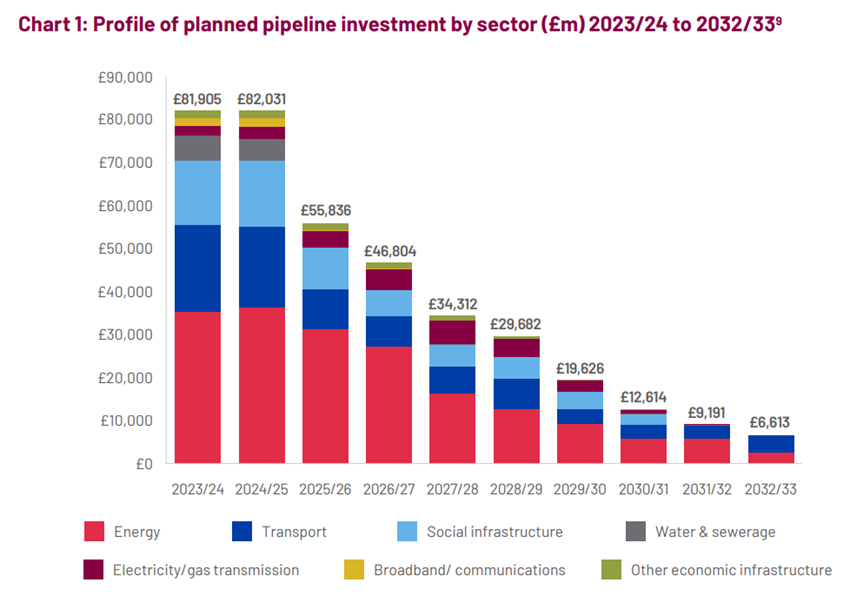The CPA’s Economics Director, Noble Francis, brings some realism to the publication of the government’s latest National Infrastructure and Construction Pipeline.
The government has finally published its delayed National Infrastructure and Construction Pipeline. However, as is the case with so many of these infrastructure announcements, they are more PR-opportunities and a declaration of ambition. The crucially missing aspect is always a plan for delivery and the fact that infrastructure investment falls throughout the Pipeline illustrates the government’s own increasing lack of certainty over plans for investment as time progresses in its pipeline (see Chart).

The latest publication is more of a wish list than an actual pipeline of infrastructure projects. As we’ve learnt over the years, and most recently with HS2, infrastructure projects are highly dependent on politicians' whims. They frequently become the victims of chopping and changing, a consequence of the churn of politicians at the top of government in recent years.
It’s important to note that the previous National Infrastructure and Construction Pipeline, which was published in 2021, had many projects and programmes that have now been delayed and cancelled. These include the Lower Thames Crossing and HS2 between Birmingham and Manchester.
It's important also to note what’s going on with spending on these projects. Although the government will declare that the value of the pipeline has increased from £650 billion to £700-775 billion, it is in fact more PR. Although spending has increased, most of this is due to increased cost of infrastructure construction since the last pipeline and government has still nevertheless cancelled and delayed an array of projects the last two years. With this Pipeline, it has extended the time period it is covering as well as including many large infrastructure projects that may or may not actually be realised with spades in the ground.
The key question is whether this is really a pipeline or more of a pipe dream? Can the construction supply chain (architects, consultants, contractors, merchants and product manufacturers) justify large investment upfront (in skills, capacity, digitalisation and modern methods) for a long-term rate of return based upon the pipeline? If firms in the supply chain do make those large investments, how can they know for certain whether they would be lumbered with high-cost assets and skilled workers that are not utilised? Given the constant delays, pauses and cancellations we’ve seen in recent years, those firms would be forgiven for having some reasonable doubts.
Conversely, if firms don't make the large upfront investments due to the risk of delays and cancellations to major infrastructure projects, there will be a lack of capacity and skills. This would either make large infrastructure projects substantially more expensive or financially unviable without substantial government subsidy.
To avoid government wasting unnecessary money on projects through subsidy perhaps one day it will realise the value of sticking to the plans it announces and giving certainty and stability to investment decisions from the private sector. But perhaps that’s also just a pipe dream?
Read the full National Infrastructure and Construction Pipeline.
Find out more from Noble by following him on Twitter/X and LinkedIn.
